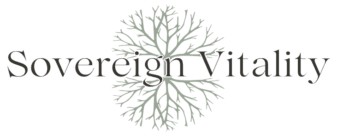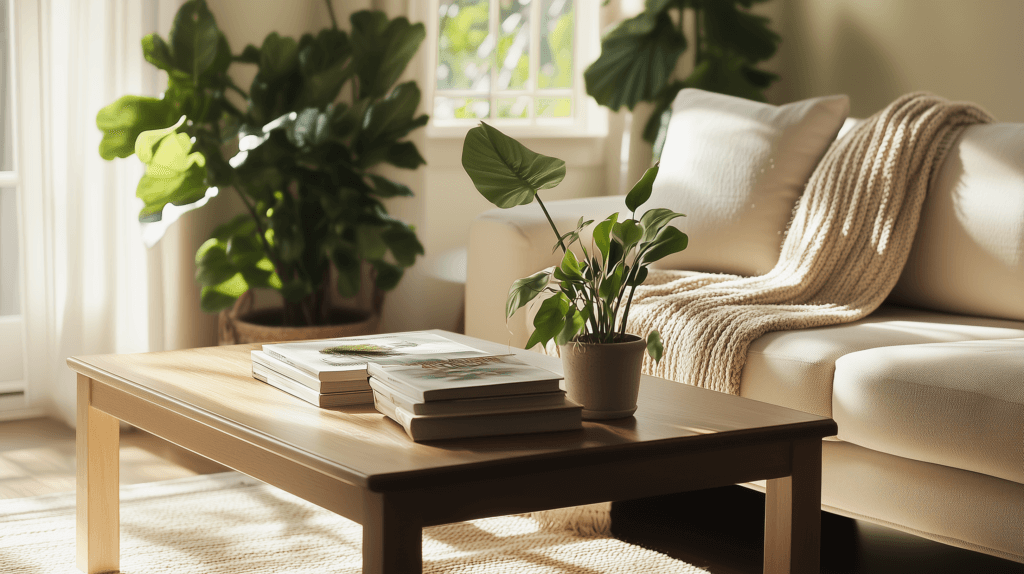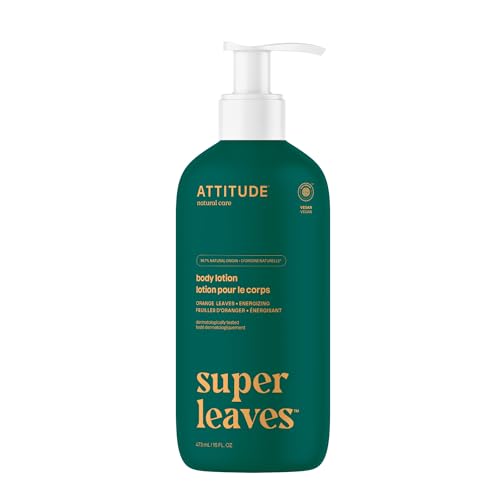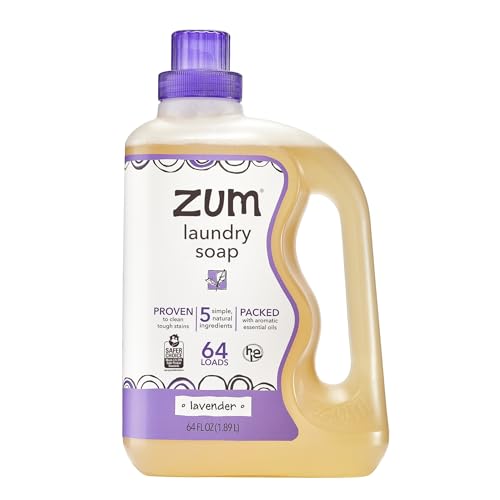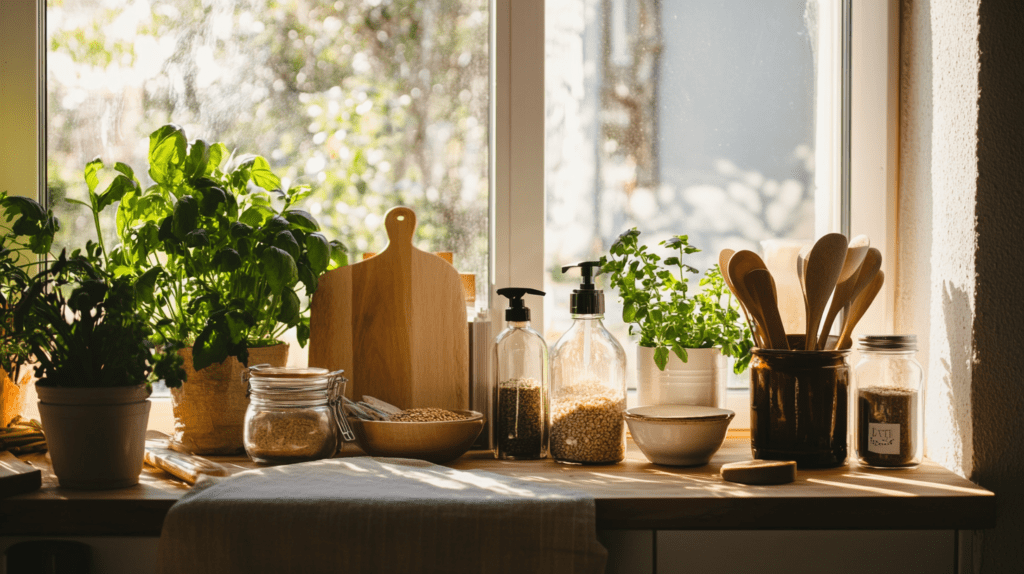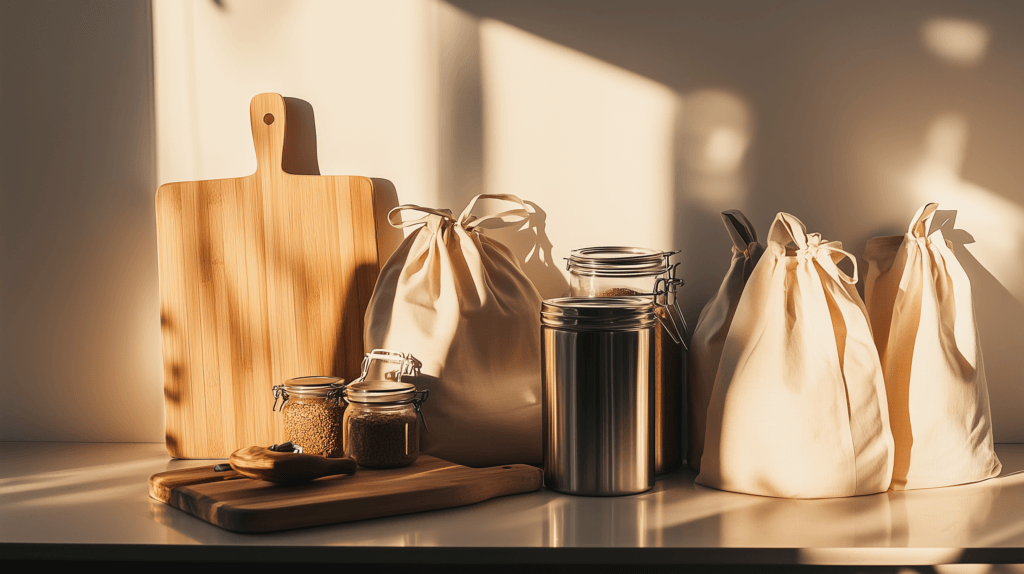This post may contain affiliate links, including those from Amazon Associates. If you make a purchase through these links, I may earn a commission at no additional cost to you. Learn more about our affiliate policy.
If you’ve ever felt overwhelmed trying to detox your home for a healthier lifestyle, you’re not alone. I remember the first time I learned how many chemicals were lurking in everyday products. It felt like I had to throw out half my house just to live a healthy life.
But after years of simplifying and refining, I’ve found that small, intentional changes make the biggest difference.
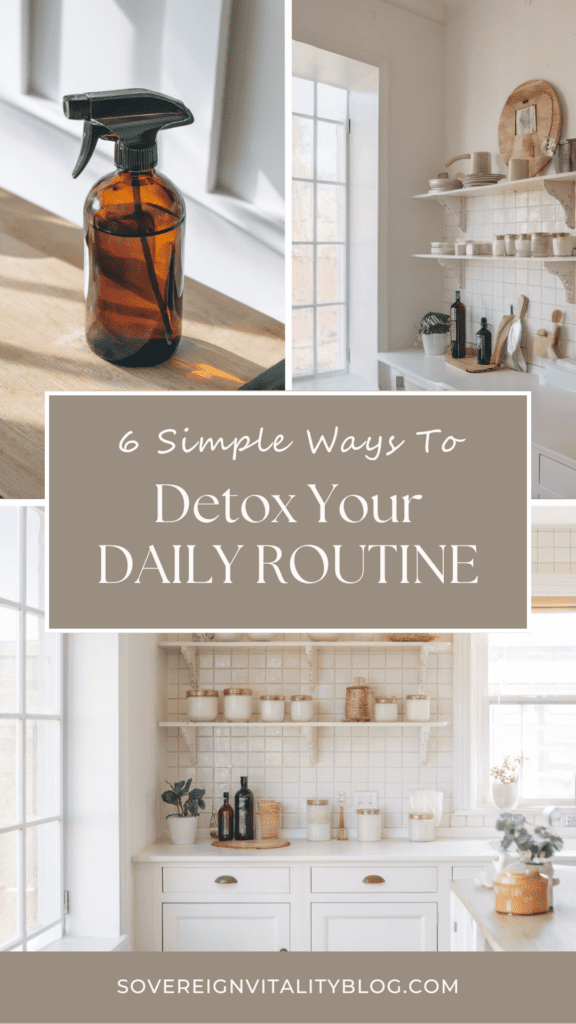
Reducing toxin exposure isn’t about perfection or doing everything at once. It’s about making mindful, manageable swaps that fit into your life without feeling like a chore. Whether it’s swapping out your cleaning products, choosing better materials for food storage, or improving air quality at home, each step you take leads to a healthier, more holistic lifestyle.
In this guide, I’ll walk you through six easy ways to reduce toxins in your daily routine without feeling like you have to overhaul your entire life overnight. Let’s start with the simplest, most effective changes you can make today.
1. Clean Up Your Personal Care Routine
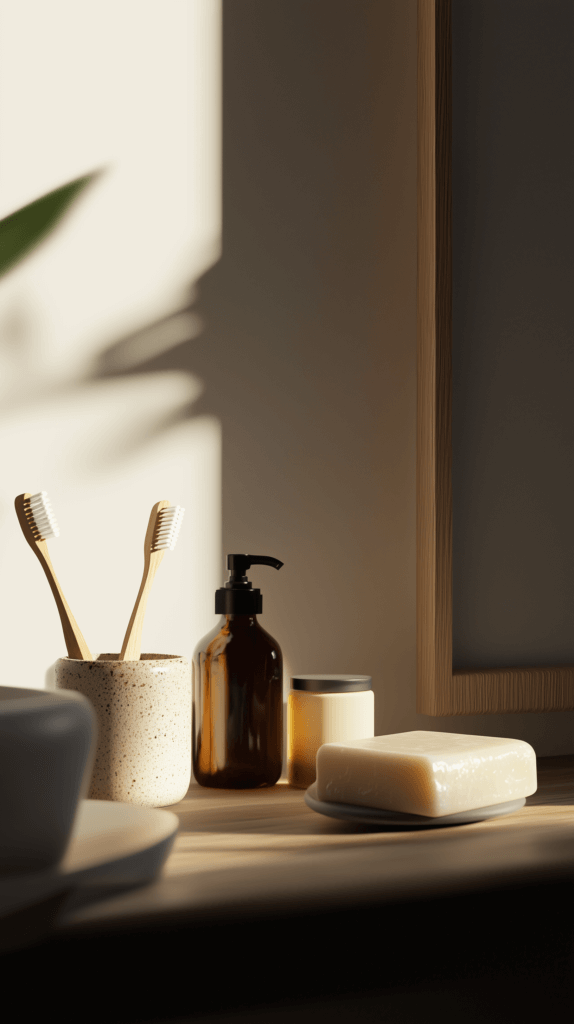
The first time I looked at the ingredient list on my shampoo bottle, I was shocked. Words like sodium lauryl sulfate, parabens, and fragrance filled the label, and I had no idea what most of them even were.
After a little research, I realized that many of these chemicals disrupt hormones, irritate the skin, and even contribute to long-term health issues. I knew I needed to start making changes, but I also knew I didn’t want to waste money tossing everything I owned overnight.
A smarter approach? Swap out products one by one as they run out. Since skin absorbs up to 60% of what we apply, prioritizing non-toxic personal care is one of the easiest ways to reduce your daily toxin exposure.
What to Avoid in Personal Care Products
Many mainstream beauty and hygiene products contain endocrine disruptors, carcinogens, and synthetic chemicals that can affect hormone balance and overall well-being. Keep an eye out for these common offenders:
- Parabens – Used as preservatives but linked to hormone disruption.
- Phthalates – Found in synthetic fragrances and plastics, known to disrupt the endocrine system.
- Sulfates (SLS, SLES) – Harsh detergents that strip skin and hair of natural oils.
- Aluminum – Common in antiperspirants, with concerns about links to breast cancer and neurological issues.
- Synthetic Fragrances – A mix of undisclosed chemicals, often containing phthalates and allergens.
Easy Swaps for Everyday Essentials
Toothpaste: Many conventional toothpastes contain fluoride, artificial sweeteners, and sulfates. A better alternative is hydroxyapatite toothpaste, which helps remineralize teeth naturally without fluoride.
Boka Ela Mint Toothpaste is a fluoride-free, nano-hydroxyapatite formula designed to remineralize enamel, support gum health, and gently whiten teeth. Free from sulfates, parabens, and artificial additives, it offers a clean, biocompatible approach to oral care.

Deodorant: Antiperspirants contain aluminum, which blocks sweat glands and may disrupt natural detox processes. Instead, opt for a magnesium- or zinc-based deodorant that neutralizes odor without harmful ingredients.
Native Deodorant offers long-lasting odor protection with a clean Powder & Cotton scent. Free from aluminum, parabens, and phthalates, it blends baking soda, probiotics, coconut oil, and shea butter for a gentle, natural, and effective formula.

Shampoo and Body Wash: Avoid sulfates and synthetic fragrances, which can irritate the skin and scalp. A fragrance-free, sulfate-free formula made with nourishing botanicals is a better choice.
Acure Ultra Hydrating Shampoo is a 100% vegan, sulfate-free formula infused with argan and pumpkin seed oils to deeply nourish, hydrate, and strengthen hair. Designed for vitality and moisture, it enhances shine while supporting a clean, natural lifestyle.

Moisturizers and Lotions: Many lotions contain parabens and petroleum-based ingredients that can clog pores and disrupt hormones. Instead, try organic oils like jojoba, shea butter, or tallow-based creams.
ATTITUDE Body Lotion is an EWG-verified, plant-based moisturizer designed for deep hydration without greasiness. Infused with revitalizing orange leaves, it nourishes dry skin while remaining vegan, cruelty-free, and dermatologically tested—perfect for an intentional, clean skincare ritual.

2. Switch to Non-Toxic Household Cleaners
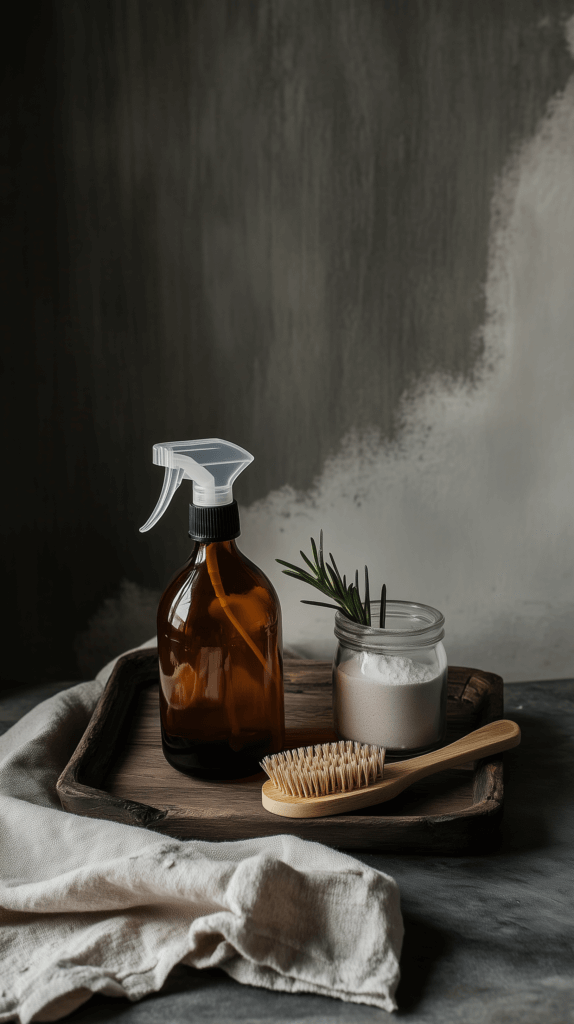
For years, I assumed that the strong scent of lemony-fresh cleaners and crisp-smelling laundry detergent meant my home was truly clean.
It wasn’t until I started learning about endocrine disruptors, formaldehyde, and VOCs (volatile organic compounds) that I realized those products were doing more harm than good. Many conventional sprays, detergents, and air fresheners release toxic chemicals that linger in the air, coat surfaces, and even absorb into the skin—impacting everything from respiratory health to hormone balance.
You don’t need harsh chemicals to keep your home fresh. In fact, some of the most effective cleaning products are made from simple, natural ingredients you probably already have in your pantry. I started making my own DIY household cleaners, and not only do they work just as well, but they cost less and leave my home smelling fresh without synthetic fragrances.
If DIY isn’t your thing, there are plenty of great store-bought alternatives that skip the toxic ingredients and work just as well.
Simple Swaps for a Healthier Home
Multi-Purpose Cleaner: Ditch chemical-filled sprays in favor of a natural all-purpose cleaner made with vinegar, baking soda, or castile soap. It’s just as effective for disinfecting and degreasing without the harmful fumes.
Puracy 99.9% Natural All-Purpose Cleaner is a plant-based, non-toxic formula that effortlessly cleans surfaces without streaking. Infused with refreshing green tea and lime, it’s biodegradable, hypoallergenic, and safe for kids, pets, and the planet—intentional cleaning, redefined.

Laundry Detergent: Many detergents contain artificial fragrances, optical brighteners, and hormone-disrupting chemicals. Instead, look for fragrance-free, plant-based detergents that clean your clothes without leaving behind a toxic residue.
Zum Clean Laundry Soap is a plant-based, toxin-free detergent crafted with saponified coconut oil, essential oils, and baking soda. Infused with soothing lavender, it delivers a gentle yet effective clean, supporting a vibrant, natural lifestyle with every wash.

Air Fresheners and Candles: Conventional air fresheners are some of the worst offenders when it comes to indoor air pollution. Instead of plug-ins and synthetic candles, opt for beeswax candles, an essential oil diffuser, or a DIY room spray for a safer way to freshen the air.
3. Improve Drinking Water Quality
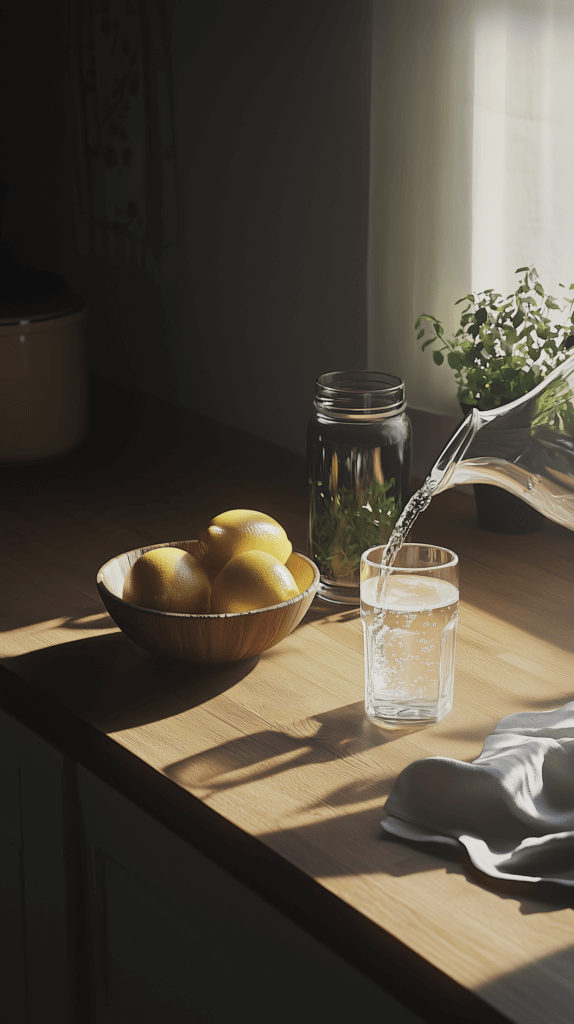
For years, I never thought twice about the water coming out of my faucet. It looked clean, tasted fine, and I assumed it was perfectly safe. But after learning about the hidden contaminants lurking in municipal water like chlorine, fluoride, heavy metals, pesticides, and even microplastics, I knew it was time to take a closer look.
While the water treatment process removes bacteria and debris, it doesn’t eliminate all harmful substances. Some of these chemicals are added intentionally, like chlorine to disinfect and fluoride for dental health, but others, like lead or pesticide runoff, seep into the water supply. Over time, even small exposures can impact overall health, especially when drinking, cooking, and bathing in treated water daily.
There are simple ways to filter out toxins and ensure you’re getting the cleanest water possible without resorting to expensive bottled water.
Drinking Water Solutions
A high-quality water filter is one of the best investments you can make for your health. Depending on your budget and living situation, here are two of the most effective options:
- Countertop gravity filters – A great choice for renters or those looking for an easy, no-installation option. Gravity filters, like the Berkey, remove chlorine, fluoride, heavy metals, and even pharmaceutical residues.
- Under-sink carbon block filters – These systems attach directly to your kitchen faucet, filtering contaminants before they reach your glass. They’re more discreet than countertop filters and require less refilling.
The Waterdrop 10UA Under Sink Water Filter is a compact, high-performance filtration system that reduces PFAS, PFOA/PFOS, lead, chlorine, and impurities while retaining essential minerals. NSF/ANSI certified, easy to install, and long-lasting (8K gallons), it supports pure, healthy living.

The Purewell 3-Stage Ultra-Filtration Gravity Water Filter is a 304 stainless steel countertop system designed for clean, toxin-free hydration. With NSF/ANSI 42 & 372 certification, it removes 99% of chlorine and other contaminants using 0.01μm filtration, ensuring pure, great-tasting water.

In addition to filtering your water, ditch plastic water bottles whenever possible. Many bottled waters contain microplastics that leach from the plastic over time, contributing to endocrine disruption and overall toxin exposure. Instead, opt for glass or stainless steel containers for safer hydration.
The Benefits of Spring Water
If you are lucky enough to live near a natural spring, this is the ideal water source. Unlike municipal tap water, which is treated with chemicals and stripped of minerals, natural spring water is pure, mineral-rich, and structured in a way that hydrates the body more effectively.
Spring water naturally contains essential minerals like magnesium, calcium, and potassium—nutrients that support hydration, bone health, and overall vitality. If you want to see if there’s a clean, publicly accessible spring near you, visit FindASpring.org to locate one in your area.
4. Reduce Plastic Exposure in the Kitchen
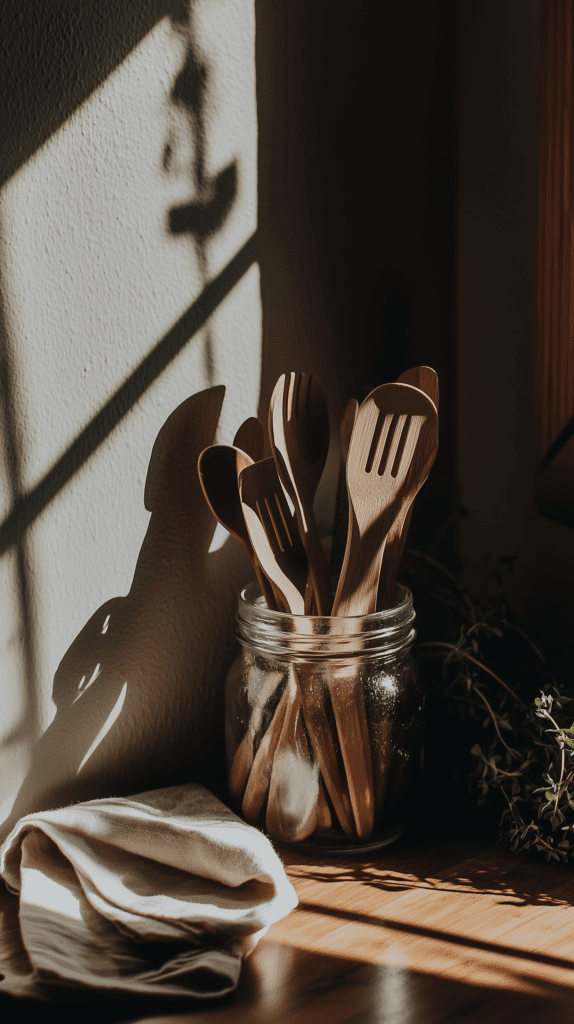
It’s easy to overlook just how much plastic comes into contact with our food. From storage containers and cooking utensils to food packaging and water bottles, plastic is everywhere in the modern kitchen.
Plastics contain hormone-disrupting chemicals like BPA and phthalates, which can leach into food, especially when heated. Over time, regular exposure to these toxins can contribute to hormone imbalances, metabolic issues, and other long-term health concerns.
Making the switch to safer, sustainable alternatives is one of the best ways to reduce daily exposure to plastic toxins without disrupting your routine. Small swaps add up over time, and the good news is that non-toxic kitchen swaps often last longer and work better than their plastic counterparts.
How Plastic Contaminates Food
Most plastic kitchen items like storage containers, non-stick cookware, or plastic wrap break down over time, releasing microplastics and harmful chemicals into food and drinks. Some of the most common ways plastic contamination occurs include:
- Heating plastic food containers in the microwave or dishwasher, which causes the material to degrade and release toxins.
- Storing acidic or oily foods in plastic, which increases chemical leaching.
- Cooking with plastic utensils on high heat, which releases microplastics into food.
Safe, Sustainable Alternatives
Storage: Ditch plastic Tupperware and opt for glass jars, stainless steel, or silicone food storage. Glass containers are durable, non-toxic, and don’t retain odors or stains.
Cooking Utensils: Replace plastic utensils with wooden, bamboo, or stainless steel alternatives. Not only are they safer, but they’re also more durable and heat-resistant.
Cookware: Non-stick pans contain PFAS (forever chemicals) that can release toxins when scratched or overheated. Switch to cast iron, stainless steel, or ceramic cookware for a safer cooking experience.
Wraps and Bags: Instead of plastic wrap or Ziploc bags, use beeswax wraps, silicone food bags, or compostable parchment paper to store leftovers and pack lunches.
Tips to Avoid Microplastic Contamination
Even when avoiding direct plastic contact, microplastics are still widespread in food, water, and the environment. Here are a few simple ways to minimize exposure:
- Filter your drinking water to remove plastic particles commonly found in municipal water supplies.
- Choose fresh produce over plastic-packaged options when possible.
- Use a French press or stainless steel coffee maker instead of single-use plastic coffee pods.
- Avoid plastic water bottles—opt for glass or stainless steel instead.
Reducing plastic in the kitchen is an easy but powerful way to support a healthier home and body. If you’re ready to swap out hidden toxins in your cookware, food storage, and utensils, check out my guide on non-toxic kitchen swaps for more practical solutions.
5. Upgrade Your Air Quality at Home
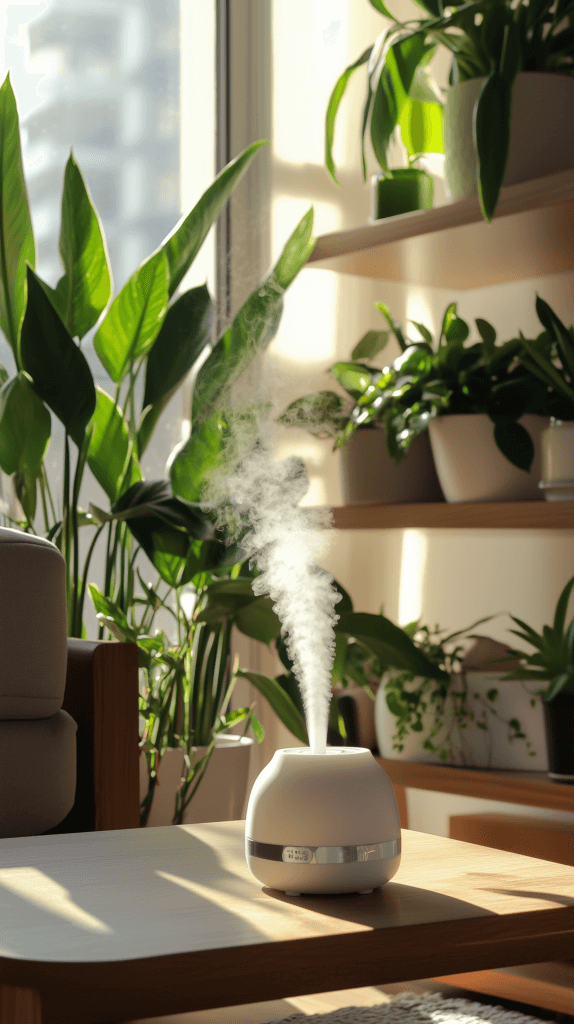
Most people focus on what they put in their bodies when it comes to reducing toxins, but what about the air you breathe?
Indoor air can be up to five times more polluted than outdoor air, thanks to off-gassing from furniture, synthetic materials, household dust, and everyday products like candles and air fresheners. Since we spend so much time at home, improving air quality is one of the most important steps toward creating a healthier living space.
How Indoor Air Becomes Toxic
Even if your home looks clean, there are invisible pollutants circulating in the air. Some of the biggest culprits include:
- Off-gassing from furniture, carpets, and synthetic materials – Many household items release volatile organic compounds (VOCs), which can linger in the air for years.
- Synthetic air fresheners, candles, and household dust buildup – Many scented products contain phthalates and formaldehyde, which can disrupt hormones and irritate the respiratory system.
- Mold and moisture-related toxins – Bathrooms, kitchens, and basements are common areas where mold can grow, releasing airborne spores that affect airways and immune function.
Fortunately, improving air quality doesn’t require expensive equipment—even simple changes can make a big difference.
Simple and Free Solutions
- Ventilation: One of the easiest ways to improve air quality is by opening windows for at least 10 minutes a day. This flushes out stale, polluted indoor air and brings in fresh oxygen.
- Dust and vacuum regularly: Toxins, allergens, and microplastics accumulate in household dust. Vacuuming with a HEPA-filter vacuum and dusting with a damp cloth helps remove contaminants rather than spreading them into the air.
Toxin-Absorbing Houseplants
Some plants do more than just look pretty—they naturally filter airborne toxins and improve oxygen levels indoors. Some of the best air-purifying plants include:
- Peace lilies – Help remove VOCs like benzene and formaldehyde.
- Snake plants – Absorb carbon dioxide at night and release oxygen, making them perfect for bedrooms.
- Spider plants – Great for filtering toxins and safe for pets.
Safer Air Freshening Alternatives
Instead of synthetic plug-ins, sprays, and paraffin candles, opt for natural air-purifying options that improve air quality while still creating a pleasant home environment:
- Essential oil diffusers – A much safer alternative to chemical-based air fresheners, diffusing high-quality essential oils cleans the air while adding a light, natural scent.
- Beeswax candles – Unlike paraffin candles, which release toxic soot, beeswax candles emit negative ions that help remove pollutants from the air.
The ASAKUKI 300ML Essential Oil Diffuser is a 5-in-1 aromatherapy device that enhances any space with soothing mist, calming LED light, and premium ultrasonic technology. Designed for relaxation, it promotes mindfulness, vitality, and intentional living.

6. Eliminate Hidden Toxins in Your Bathroom
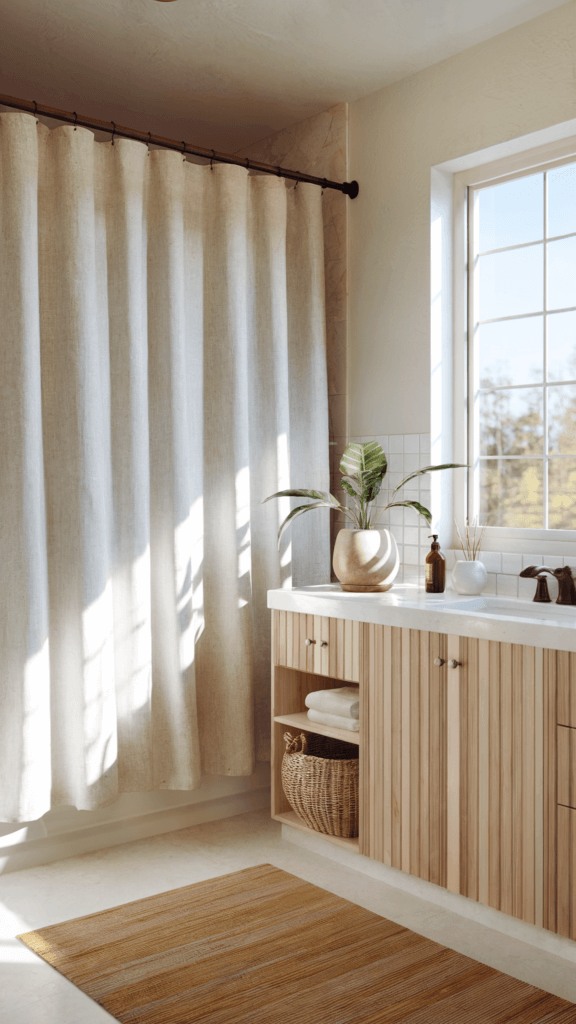
The bathroom might not be the first place you think of when reducing toxin exposure, but it’s actually one of the highest-risk areas in the home.
From chemical-laden personal care products to plastic-heavy hygiene items, the bathroom is filled with everyday essentials that can introduce hormone-disrupting chemicals, synthetic fragrances, and unnecessary plastic waste into your routine.
The good news is that simple non-toxic bathroom swaps can make a huge difference, both for your health and the environment. By switching to cleaner, more sustainable alternatives, you can reduce exposure to harmful ingredients while also cutting back on waste.
Upgrade Everyday Essentials
Shower Curtain: Most standard shower curtains are made from PVC (polyvinyl chloride), one of the most toxic plastics, which releases harmful chemicals into the air over time. Instead, opt for a PEVA (polyethylene vinyl acetate), organic cotton, or linen shower curtain, which are free from off-gassing chemicals.
Toothbrushes and Razors: Plastic toothbrushes and disposable razors contribute to both plastic waste and microplastic exposure. Swap to a bamboo toothbrush, which is biodegradable, and switch to a safety razor instead of disposable plastic razors—these last for years and provide a better shave with fewer irritants.
Feminine Care Products: Many conventional tampons and pads contain chlorine bleach, synthetic fragrances, and chemical-laden absorbent materials that can disrupt hormones and irritate sensitive skin. Instead, choose:
- Organic cotton tampons and pads, which are free from synthetic additives.
- Menstrual cups, a zero-waste alternative made from medical-grade silicone.
- Period underwear, which is reusable, comfortable, and free from hidden toxins.
Toilet Paper: Most mainstream toilet paper brands use chlorine bleach and synthetic softeners, which not only introduce unnecessary chemicals but also harm the environment. Instead, opt for bamboo toilet paper, unbleached options, or recycled paper varieties, which are free from harsh processing chemicals and more sustainable.
Conclusion
Reducing toxins in your daily routine doesn’t have to be overwhelming, drastic, or expensive. Even small swaps can significantly lower your exposure to harmful chemicals over time.
The key is to start with high-contact areas, focusing on the products and materials you use most often, like personal care items, kitchen essentials, and air quality. From there, you can gradually transition to a cleaner, healthier home at a pace that feels right for you.
Remember, this is a journey, not a race. Progress matters more than perfection, and every small change adds up to a healthier, more vibrant life. Whether you start with one swap or overhaul multiple areas at once, you’re making choices that support your well-being for the long run.
